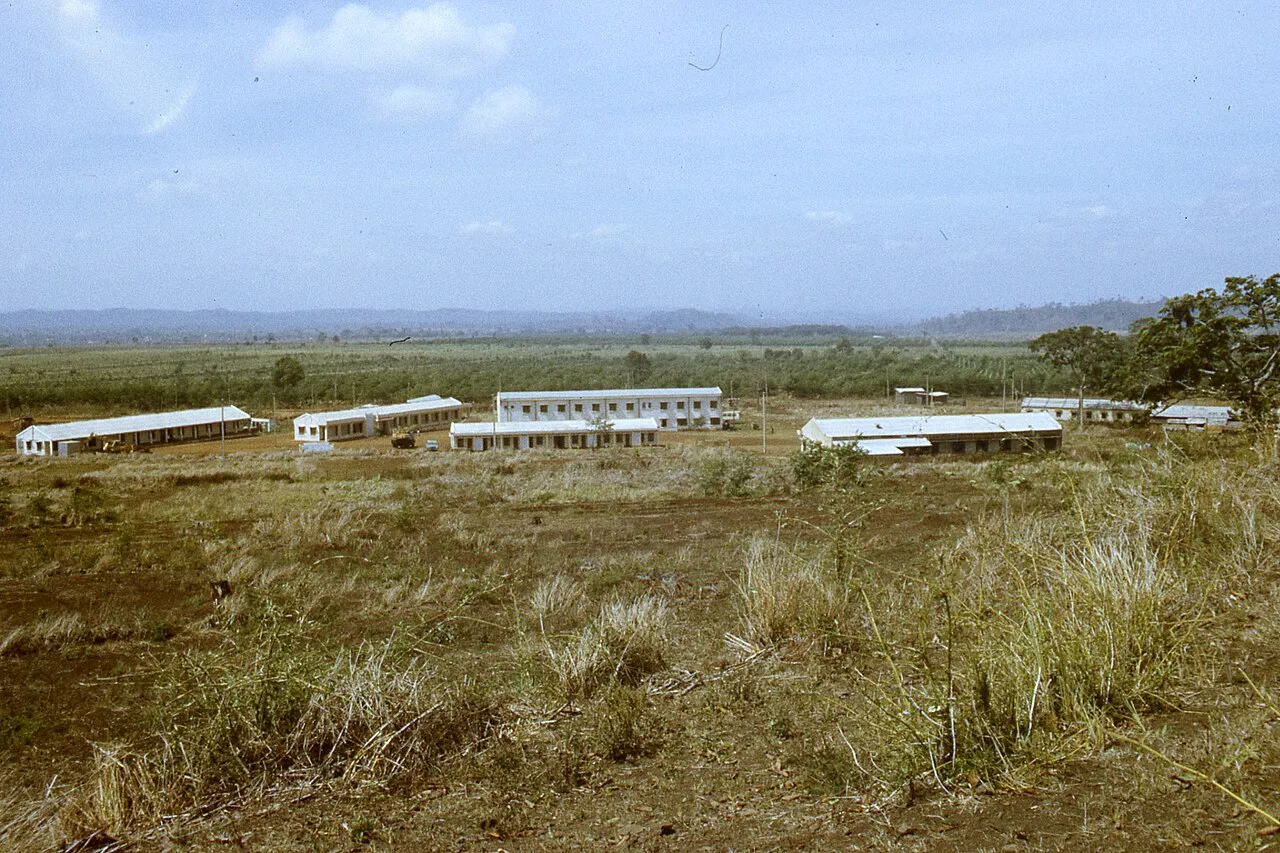Coffee, a familiar beverage to millions worldwide, holds a special history in Vietnam. Beginning with small-scale experiments by French missionaries in the mid-19th century, coffee has navigated a journey of ups and downs, overcoming historical upheavals to become a leading economic sector in the country. Today, Vietnam proudly stands as one of the world’s top coffee exporting powerhouses, affirming its position on the global coffee map.
Humble Beginnings of the Coffee Plant
Historical records indicate that coffee was first introduced to Vietnam in 1857 when French missionaries brought Arabica (Coffea arabica) seedlings for trial cultivation in Catholic churches in northern provinces such as Ninh Binh, Thanh Hoa, Nghe An, Ha Tinh, and later spreading to the Central and Central Highlands regions.
However, the initial Arabica variety did not prove well-suited to Vietnam’s soil and climate. The plants were susceptible to pests and diseases, particularly stem borers and coffee rust. In 1908, the French further introduced two new coffee varieties to Vietnam: Robusta (Coffea canephora) and Excelsa (Coffea exelsa). Trials showed that the Central Highlands was an ideal region for coffee development, especially for the Robusta variety.
In the early 20th century, Vietnamese coffee was highly regarded in France, especially Tonkin coffee, with its flavor compared to Arabica Mocha. However, the coffee industry at this time was still nascent and did not yet play a significant commercial role.
During the period of 1960-1970, North Vietnam established many state-owned farms cultivating all three types of coffee: Arabica, Robusta, and Excelsa. However, development was not promising, and by the early 1970s, it was concluded that coffee could not be grown in the North.
Reform and Breakthrough
After 1975, Vietnam faced numerous economic difficulties. The collective agriculture model proved inefficient. In 1986, the state implemented the Đổi Mới (Renovation) policy, and coffee was included in the key economic development plan.
In 1980, a coffee development program was approved, initiating a series of cooperative agreements for coffee production with the Soviet Union and Eastern European countries. The coffee growing area was expanded in the Central Highlands and Southeast regions, with Robusta being prioritized due to its better pest and disease resistance.

In 1982, the Vietnam Coffee Enterprises Union (LH-XN-CPVN) was established, marking a significant step in organizing coffee production and processing.
In 1986, the first People’s Coffee Conference was held, encouraging households to participate in coffee cultivation. Along with new policies and rising global coffee prices, the Vietnamese coffee industry experienced a remarkable breakthrough.
From 1986, the Vietnamese government focused resources on investing in the coffee sector, aiming to transform coffee into a crucial agricultural industry. In addition to state-owned farms, the government also encouraged individual households to grow coffee. As a result, coffee production in Vietnam boomed in terms of area, output, and export value.
In the late 1980s, the Catimor (Arabica) coffee variety was introduced into production, opening up opportunities for Arabica coffee development in Vietnam with its resistance to coffee rust disease.
Vietnamese Coffee on the World Stage
By the late 1990s, Vietnam had become the leading coffee producer in Southeast Asia and the second-largest producer and exporter of green coffee in the world, second only to Brazil. However, production was mainly focused on the Robusta variety, accounting for over 90% of the total coffee growing area.
Coffee production grew steadily by 20-30% annually in the 1990s, making a significant contribution to the country’s economic development, reducing the poverty rate from 60% to below 10%.
During the renovation period, the coffee industry was nationalized and developed strongly in the Central Highlands. The emergence of private enterprises such as Trung Nguyen (1996) and Highlands Coffee (1998) boosted the development of the coffee processing industry and built Vietnamese coffee brands in the international market.
In 30 years (from 1986 to 2016), coffee production in Vietnam increased nearly 100 times, from 18,400 tons in 1986 to 900,000 tons in 2000 and reaching 1.76 million tons in 2016; of which 90% to 95% of the output is exported annually.
In recent years, Vietnam has focused on improving the quality of exported coffee, expanding Arabica coffee growing areas in the northern provinces, and concentrating on developing specialty coffee. The Central Highlands remains the key coffee-producing region, renowned for its high-quality Robusta coffee.
Achievements and Future Directions
With an average yield of about 2.3 tons/ha, Vietnam has the highest coffee yield in the world. The focus on the Robusta variety has helped Vietnam create a unique brand of “high-intensity Robusta” cultivation, bringing high profits to farmers.

However, the focus on export volume and Robusta variety also poses challenges regarding the quality and added value of Vietnamese coffee. Developing specialty coffee, improving processing quality, and building strong brands are crucial directions for the Vietnamese coffee industry to continue sustainable development in the future.
The history and development of Vietnamese coffee is a proud journey, demonstrating the diligence, creativity, and adaptability of the Vietnamese people. From a trial crop, coffee has become an indispensable part of Vietnamese culture and economy, making a significant contribution to the country’s development.
References:
- Country Coffee Profile Vietnam – 2019; International Coffee Organization
- Ngành cà phê Việt nam – hiện trạng và triển vọng Đoàn Triệu Nhạn; Vietnam Coffee Cocoa Association